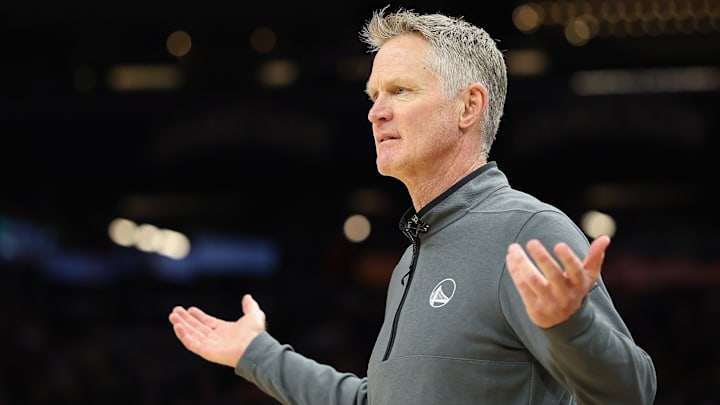As the Golden State Warriors were held in a contractual stand-off by restricted free agent Jonathan Kuminga this offseason, the one thing they undeniably desired was that his contract, when the ink was dry, would be relatively easy to trade before its expiration.
Yet, now that Kuminga has finally signed his two-year, $46.8 million deal to return to the team, the Warriors are also hard-capped at the second apron, meaning that pulling off any deal for a high-impact player this season could prove to be exceedingly difficult.
Therefore, although Kuminga's contract is designed essentially as a walking trade piece, we could see the team give a genuine attempt at re-ingratiating Kuminga into the rotation before they decide to cut bait (depending on what's available on the trade market, of course).
The Warriors are in a financial bind, and it could prevent them from making the move they need
Last season at the trade deadline, the Warriors were able to aggregate a number of sizable salaries, including Andrew Wiggins, Kyle Anderson, Dennis Schroder and company, in order to bring in Jimmy Butler from the Miami Heat.
While the organization took time to weigh the potential benefits and risks they would be taking on in making such a splash move, it ultimately proved to be a difference-making trade for the team as their production skyrocketed and they played like one of the best teams in the NBA for the latter portion of the season.
This season, the organization might be looking to repeat that success with a similar trade, albeit one of smaller stature and significance. Yet, according to ESPN Analyst Bobby Marks, Kuminga's extension and Al Horford's signing could make it difficult to do so.
As a result of their use of the taxpayer mid-level exception to sign veteran center Al Horford and the extra money they gave Kuminga to entice him into accepting a team option, the organization is now hard-capped at the second apron.
To make matters worse, the Warriors' total cap allocations for 2025-26 come to just over $236 million, meaning that, as it stands, they are only just over $2 million below that threshold.
While Kuminga's deal is a very movable piece as a result of its simultaneously sizable and tolerable annual value, Golden State might have a hard time finding a difference-making player at that price.
If the right option does not reveal itself before the deadline, therefore, the Warriors could be stuck with Kuminga on the roster and with little to no potential for movement at the deadline: something that could be a recipe for late-season catastrophe.
